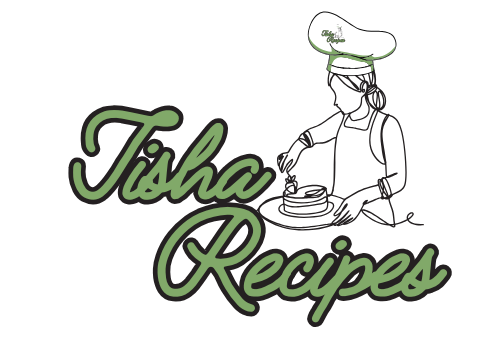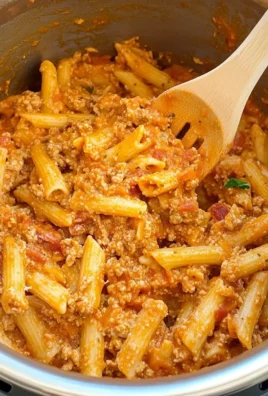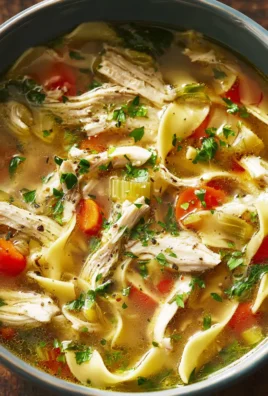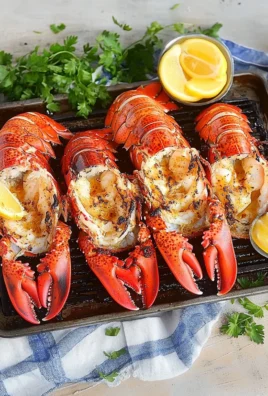
Sheet Pan Sausage and Veggies has earned a place as a go-to dish for busy households and cooking enthusiasts alike. It’s a dish that combines simplicity, versatility, and robust flavors in a single preparation method. Whether you’re looking for a quick weeknight dinner or a wholesome meal to feed a crowd, this recipe delivers on all fronts. Its ability to adapt to various dietary needs, ingredient preferences, and flavor profiles makes it an ideal addition to any culinary repertoire.
This one-pan wonder marries the savory richness of sausage with the natural sweetness and earthiness of roasted vegetables. The result is a meal that is both visually appealing and deeply satisfying. Beyond its taste, this dish embodies the growing trend toward practical, fuss-free cooking without compromising on quality or nutrition.
The Popularity of Sheet Pan Meals
The Rise of Sheet Pan Cooking
In recent years, sheet pan meals have soared in popularity, largely due to their ease of preparation and minimal cleanup. Busy lifestyles often leave little time for elaborate cooking, and the sheet pan method offers a solution that doesn’t sacrifice flavor or nutrition. The concept of cooking an entire meal on a single pan has resonated with both novice cooks and seasoned chefs.
Why Sheet Pan Sausage and Veggies Stands Out
Among the many variations of sheet pan meals, sausage and veggies remain a standout for several reasons:
- Flavor Pairing: The bold, savory flavors of sausage complement the natural sweetness of roasted vegetables.
- Texture Variety: Roasting brings out a delightful mix of crispy edges and tender interiors in vegetables while caramelizing the sausages for added depth.
- Customizability: The recipe can easily be tailored to suit different tastes, dietary restrictions, and ingredient availability.
A One-Pan Solution for Busy Schedules
The beauty of this dish lies in its simplicity. By preparing everything on a single sheet pan, you save time on both cooking and cleanup, making it a perfect choice for hectic weekdays or low-effort meal prep.
Historical Context of One-Pan Meals
A Universal Cooking Technique
The idea of cooking an entire meal in one vessel is not new. From the Dutch oven stews of Europe to traditional tagines of North Africa, cultures around the world have long embraced one-pan cooking as a practical and flavorful approach.
Evolution to Sheet Pan Cooking
In modern kitchens, the sheet pan has become a staple, particularly in Western cooking. Its wide surface area allows for even roasting and browning, making it ideal for a variety of ingredients. Sheet pan sausage and veggies represent a contemporary take on this age-old technique, combining the rustic charm of roasted foods with the convenience of modern cookware.
Global Inspirations
While the dish itself is simple, its flavor combinations can be influenced by culinary traditions worldwide:
- Mediterranean: Incorporating zucchini, bell peppers, and oregano.
- Asian: Using soy-glazed sausages and bok choy.
- Cajun: Featuring andouille sausage, sweet potatoes, and a spicy Creole seasoning.
Nutritional and Culinary Benefits
Balanced Nutrition in One Dish
Sheet Pan Sausage and Veggies is not just delicious; it’s also packed with nutrients. By combining protein-rich sausage with a medley of vegetables, the dish offers a well-rounded meal.
- Protein from Sausages:
Sausages are a rich source of protein, essential for muscle repair and overall health. Depending on the type of sausage used (pork, chicken, turkey, or plant-based), the protein content and fat levels can vary, allowing for customization based on dietary goals. - Vegetable Diversity:
The use of multiple vegetables ensures a variety of vitamins, minerals, and antioxidants. Ingredients like bell peppers, broccoli, and sweet potatoes provide fiber, vitamin C, and beta-carotene. - Healthy Fats:
Drizzling the vegetables with olive oil before roasting not only enhances flavor but also provides heart-healthy monounsaturated fats.
The Science of Roasting
Roasting is one of the best ways to cook vegetables, as it concentrates their natural sweetness and creates a satisfying texture. The high heat caramelizes the natural sugars, resulting in crispy edges and tender interiors. Similarly, sausages develop a crispy exterior while retaining their juicy centers, thanks to the oven’s even heat distribution.
The Key Components of Sheet Pan Sausage and Veggies
Sausage Selection
The type of sausage you choose greatly influences the dish’s flavor profile. Common options include:
- Pork Sausage: Rich and flavorful, with a classic savory taste.
- Chicken or Turkey Sausage: Leaner options that still deliver robust flavors.
- Plant-Based Sausages: Ideal for vegetarians or those seeking a meat-free alternative. Many brands now offer plant-based sausages with realistic textures and bold flavors.
Vegetable Choices
The versatility of this dish allows for nearly endless combinations of vegetables. Popular choices include:
- Root Vegetables: Sweet potatoes, carrots, and parsnips, which caramelize beautifully.
- Cruciferous Vegetables: Broccoli, cauliflower, and Brussels sprouts for a hearty texture and earthy flavor.
- Alliums: Onions, shallots, and garlic, which add aromatic depth.
- Seasonal Additions: Asparagus in the spring, zucchini in the summer, or squash in the fall.
Seasonings and Sauces
The right seasonings elevate the dish from simple to spectacular. Common seasonings include garlic powder, paprika, Italian herbs, and red pepper flakes. For added complexity, consider finishing the dish with a drizzle of balsamic glaze, honey mustard, or fresh herbs like parsley or thyme.
Why Sheet Pan Sausage and Veggies is Universally Loved
1. Ease of Preparation
The straightforward nature of this dish means it’s accessible to cooks of all skill levels. With minimal chopping and a single cooking vessel, it’s a recipe that anyone can master.
2. Versatility
This dish is highly adaptable to personal preferences and dietary needs. Whether you’re looking for a keto-friendly meal, a vegetarian option, or a gluten-free dish, the ingredients can be adjusted accordingly.
3. Crowd-Pleasing Appeal
The combination of savory sausage and roasted vegetables is universally appealing, making it an excellent choice for family dinners, potlucks, or casual gatherings.
4. Minimal Cleanup
By limiting the cooking to a single sheet pan, this recipe significantly reduces the amount of cleanup required, freeing up time to enjoy the meal and relax.
Detailed Ingredients and Step-by-Step Preparation
Preparing Sheet Pan Sausage and Veggies is as much about the process as it is about the ingredients. Achieving the perfect balance of flavors, textures, and visual appeal requires thoughtful preparation, careful selection of ingredients, and precise execution. This section provides a comprehensive guide to creating this one-pan dish, offering detailed instructions, tips, and variations to ensure it turns out perfect every time.
Selecting and Preparing Ingredients
1.1. Sausage Selection
The sausage is the star of the dish, and your choice will determine the flavor profile:
- Pork Sausage: Traditional and hearty, ideal for a classic flavor. Italian sausage, bratwurst, or chorizo are excellent options.
- Chicken or Turkey Sausage: Lighter alternatives that still provide robust flavor. Opt for seasoned varieties, such as garlic herb or spicy.
- Plant-Based Sausages: For a vegetarian or vegan option, use plant-based sausages like those made from soy, pea protein, or seitan.
Preparation Tips:
- Slice sausages into 1-inch pieces for even cooking and easier serving.
- If using raw sausages, ensure they are cooked through by the end of the roasting process.
1.2. Vegetable Selection
Vegetables are the backbone of this dish, providing color, texture, and nutritional value. Choose a mix for a balanced and visually appealing result:
- Root Vegetables: Sweet potatoes, carrots, and parsnips bring natural sweetness and caramelize beautifully.
- Cruciferous Vegetables: Broccoli, Brussels sprouts, and cauliflower add an earthy, hearty element.
- Alliums: Red onions, shallots, and garlic enhance the overall flavor with their aromatic qualities.
- Seasonal Favorites: Use zucchini and bell peppers in summer or squash and asparagus in spring.
Preparation Tips:
- Cut vegetables into uniform sizes to ensure even cooking.
- Toss vegetables in olive oil and seasonings before roasting for maximum flavor.
Preparing the Sheet Pan
2.1. Choosing the Right Pan
- Material: Heavy-duty, rimmed sheet pans are best for roasting as they distribute heat evenly and prevent spills.
- Size: Use a large sheet pan to ensure ample space between ingredients, allowing air circulation and proper browning.
2.2. Lining the Pan
- Parchment Paper: Prevents sticking and makes cleanup easier.
- Silicone Mats: A reusable option that provides a non-stick surface.
- No Lining: For maximum crispiness, roast directly on the sheet pan, but grease it lightly with oil.
2.3. Spacing for Even Cooking
- Spread vegetables and sausage pieces in a single layer, ensuring there is space between them. Overcrowding the pan can lead to steaming rather than roasting.
Seasoning and Flavor Enhancements
3.1. Basic Seasoning Blend
A simple mix of olive oil, salt, and pepper can bring out the natural flavors of the ingredients.
3.2. Advanced Flavor Combinations
- Italian-Inspired: Garlic powder, oregano, basil, and crushed red pepper flakes.
- Mediterranean: Za’atar, sumac, and a drizzle of lemon juice.
- Spicy Cajun: Paprika, cayenne, thyme, and onion powder.
- Asian Fusion: Soy sauce, sesame oil, ginger, and a touch of honey.
3.3. Optional Add-Ins
- Cheese: Sprinkle grated Parmesan or crumbled feta over the finished dish.
- Nuts: Toasted pine nuts or slivered almonds add crunch and richness.
- Fresh Herbs: Garnish with parsley, cilantro, or dill for freshness and color.
Step-by-Step Cooking Instructions
Step 1: Preheat the Oven
- Preheat your oven to 400°F (200°C). This temperature ensures a balance between caramelization and even cooking.
Step 2: Prepare the Vegetables
- Wash and peel vegetables as needed.
- Cut into bite-sized pieces, ensuring uniform size for even roasting.
- In a large mixing bowl, toss vegetables with olive oil, salt, pepper, and selected seasonings.
Step 3: Prepare the Sausages
- Slice sausages into 1-inch rounds.
- If using raw sausages, prick them with a fork to prevent bursting during cooking.
Step 4: Arrange on the Sheet Pan
- Spread the seasoned vegetables evenly across the sheet pan.
- Scatter the sausage pieces among the vegetables. Ensure everything is in a single layer.
Step 5: Roast in the Oven
- Place the sheet pan in the preheated oven on the center rack.
- Roast for 20–25 minutes, then remove the pan and toss the ingredients for even cooking.
- Return to the oven and roast for an additional 15–20 minutes, or until the vegetables are tender and the sausages are browned.
Step 6: Finishing Touches
- Drizzle with balsamic glaze, sprinkle with fresh herbs, or add a squeeze of lemon juice before serving.
Troubleshooting and Tips for Perfection
5.1. Avoiding Soggy Vegetables
- Use a hot oven (at least 400°F) to ensure proper roasting.
- Do not overcrowd the pan; use two pans if necessary.
5.2. Ensuring Sausages Cook Evenly
- For raw sausages, consider pre-cooking them in a skillet before roasting.
- Place sausage pieces on top of the vegetables to allow juices to drip down, enhancing the flavor.
5.3. Recognizing Doneness
- Vegetables should be fork-tender with caramelized edges.
- Sausages should be browned on the outside and cooked through to an internal temperature of 165°F (74°C).
Serving Suggestions
6.1. As a Standalone Dish
Serve Sheet Pan Sausage and Veggies directly from the pan for a rustic, family-style presentation. Pair it with crusty bread to soak up the juices.
6.2. With Grain or Pasta
- Serve over quinoa, rice, or couscous for a complete meal.
- Toss with cooked pasta and a drizzle of olive oil or tomato sauce for a hearty dinner.
6.3. As a Salad Base
Cool the roasted vegetables and sausages slightly, then toss with mixed greens, a light vinaigrette, and crumbled cheese for a warm salad.
Creative Variations, Serving Ideas, and Repurposing Leftovers
Sheet Pan Sausage and Veggies is not just a meal—it’s a foundation for culinary creativity. With endless possibilities for variations, serving styles, and leftover transformations, this dish becomes more than the sum of its parts. This section explores how to adapt and elevate the dish, create complementary pairings, and repurpose leftovers into new, exciting meals.
Creative Variations for Sheet Pan Sausage and Veggies
1.1. Flavor Profiles Around the World
Customize the dish by drawing inspiration from global cuisines:
- Mediterranean: Use chicken sausage, zucchini, eggplant, cherry tomatoes, and bell peppers. Season with oregano, thyme, and garlic, and finish with crumbled feta cheese.
- Asian-Inspired: Opt for sesame-ginger chicken sausage, snap peas, bok choy, and mushrooms. Toss with soy sauce, sesame oil, and a sprinkle of toasted sesame seeds.
- Cajun Style: Choose andouille sausage, sweet potatoes, okra, and red onion. Season with Cajun spices and finish with fresh parsley.
- German Twist: Use bratwurst, potatoes, cabbage, and carrots. Season with caraway seeds and serve with a side of whole-grain mustard.
1.2. Seasonal Variations
Embrace the flavors of each season by incorporating seasonal vegetables:
- Spring: Asparagus, radishes, and baby carrots paired with turkey sausage.
- Summer: Zucchini, yellow squash, and cherry tomatoes with spicy Italian sausage.
- Fall: Brussels sprouts, butternut squash, and apples with sage-seasoned chicken sausage.
- Winter: Parsnips, beets, and sweet potatoes paired with smoked sausage.
1.3. Dietary Modifications
Adapt the recipe to suit different dietary needs:
- Vegetarian: Replace sausages with plant-based alternatives or roasted chickpeas for a protein boost.
- Low-Carb/Keto: Focus on low-carb vegetables like broccoli, cauliflower, and zucchini, paired with high-fat sausages.
- Gluten-Free: Ensure sausages and seasonings are certified gluten-free.
- Paleo-Friendly: Stick to natural sausages and pair them with non-starchy vegetables.
1.4. Additional Ingredients for Texture and Flavor
- Nuts and Seeds: Add roasted almonds, pecans, or sunflower seeds for crunch.
- Cheese: Finish with a sprinkle of Parmesan, shredded mozzarella, or crumbled goat cheese.
- Fruits: Incorporate roasted apples, pears, or dried cranberries for a hint of sweetness.
Perfect Pairings for a Complete Meal
2.1. Side Dishes
Enhance your Sheet Pan Sausage and Veggies with complementary sides:
- Grain Options: Serve over quinoa, couscous, or wild rice for a hearty base.
- Mashed Potatoes: Creamy mashed potatoes make a classic pairing, balancing the roasted flavors.
- Pasta: Toss the roasted ingredients with penne or farfalle and a drizzle of olive oil for a pasta dish.
2.2. Salads
Pair the dish with fresh, vibrant salads for balance:
- Mixed Greens: Toss arugula, spinach, or spring mix with a lemon vinaigrette.
- Grain Salad: Combine cooked farro, roasted vegetables, and a balsamic glaze.
- Coleslaw: A tangy cabbage slaw adds crunch and contrast.
2.3. Dips and Spreads
Elevate the dish with flavorful condiments:
- Hummus: Serve roasted vegetables and sausage with creamy hummus on the side.
- Tzatziki: A yogurt-based cucumber dip pairs beautifully with Mediterranean-inspired versions.
- Mustard or Aioli: Spicy mustard or garlic aioli enhances the savory notes of sausage.
2.4. Beverages
Complete the meal with thoughtful beverage pairings:
- Wine: A medium-bodied red like Pinot Noir or a crisp white like Sauvignon Blanc.
- Beer: A light lager or an amber ale complements the rich flavors.
- Non-Alcoholic Options: Sparkling water with citrus slices or iced tea for a refreshing finish.
Advanced Cooking Techniques and Presentation Tips
3.1. Enhancing Textures
- Crispier Veggies: Roast at a higher temperature (425°F–450°F) and avoid overcrowding the pan.
- Charred Edges: Broil the dish for the last 2–3 minutes to achieve caramelized edges.
- Layering Flavors: Add fresh herbs and citrus zest after roasting for a burst of freshness.
3.2. Presentation Tips
- Family-Style Platter: Arrange the roasted ingredients on a large wooden board or platter for a rustic look.
- Individual Bowls: Divide the dish into portioned bowls with a garnish of fresh herbs.
- Elevated Touches: Use microgreens or edible flowers for a sophisticated finish.
3.3. Infusing Smoky Flavors
For added depth, consider these techniques:
- Smoked Spices: Use smoked paprika or chipotle powder in the seasoning blend.
- Grill Method: Prepare the dish on a grill-safe pan for a smoky char.
Repurposing Leftovers
4.1. Breakfast Options
- Sheet Pan Hash: Chop leftover sausage and veggies into smaller pieces and fry them with eggs for a hearty breakfast.
- Breakfast Wraps: Stuff leftovers into tortillas with scrambled eggs and cheese for a quick breakfast burrito.
4.2. Lunch Ideas
- Power Bowls: Layer leftovers with cooked quinoa or brown rice, and drizzle with tahini or a yogurt-based dressing.
- Flatbread Pizza: Spread leftovers over a flatbread with marinara sauce and mozzarella, then bake until bubbly.
4.3. Dinner Transformations
- Stir-Fry: Toss leftovers into a skillet with soy sauce, sesame oil, and fresh vegetables for an Asian-inspired stir-fry.
- Soup: Add the roasted ingredients to a pot with broth, diced tomatoes, and lentils for a hearty soup.
4.4. Snack and Appetizer Ideas
- Skewers: Thread leftover sausage and veggies onto skewers, reheat, and serve as appetizers.
- Dip Platter: Serve cold leftovers alongside hummus, pita bread, and olives for a snack platter.
Frequently Asked Questions (FAQs)
Can I prepare Sheet Pan Sausage and Veggies ahead of time?
- Yes! Prep the vegetables and sausage in advance and store them in the fridge. Assemble and roast when ready to cook.
How do I store leftovers?
- Store leftovers in an airtight container in the refrigerator for up to 3–4 days.
What’s the best way to reheat the dish?
- Reheat in a 375°F oven for 10–15 minutes to maintain the crispy texture. A microwave works for convenience but may soften the vegetables.
Can I freeze this dish?
- While sausages freeze well, some vegetables may lose their texture. Freeze only the sausages and hardier vegetables for the best results.
What other proteins can I use?
- Try cubed chicken, shrimp, or even firm tofu as an alternative to sausage.
Conclusion
Sheet Pan Sausage and Veggies is a dish that encourages creativity and adaptation. From exploring global flavor profiles to finding innovative ways to repurpose leftovers, this meal offers endless opportunities for customization. Whether you’re serving it as a quick weeknight dinner or transforming it into a gourmet creation, its versatility and simplicity make it a timeless favorite.
Let this dish become a canvas for your culinary expression, and enjoy the satisfaction of a meal that is as enjoyable to prepare as it is to eat!




Leave a Comment